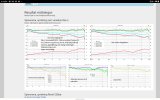Thanks for your response it's very very VERY apparent Analog crossover is 100% not for me and not the solution so il considering getting an Active crossover (mini DSP?) i have amps so I'm okay on that
Now The MTM thing my original plan was MTM + future "bass towers" like the directiva bass towers
i dont think il have the budget rn for those said bass extension towers so that leaves basically everything else to worry about
A MiniDSP Flex should work quite well for an MTM. You can save a bit on the PR’s if you take some cheaper ones (check on AliExpress for instance), or just go reflex for a first project. As for the tweeter, I’m not sure if that’s the best choice for an MTM. The recommended crossover point seems to be > 2 kHz. I think for an MTM, I would choose a quite a bit lower X-over of 1.5 to 1.8 kHz, and to prevent interference lobing of the woofers, you would actually need something even lower, more like 1 to 1.3 kHz. You can cheat a bit by offsetting the tweeter a bit, to bring the woofers closer and raise the crossover frequency. Maybe SB TW29D-B or TW29R-B are a better choice, or some lower FS seas or ScanSpeak tweeters. Or something smaller, like SS D3004.
… and yes, imho, most MTMs have a way too high crossover frequency. It’s a compromisers, and not the best one.


